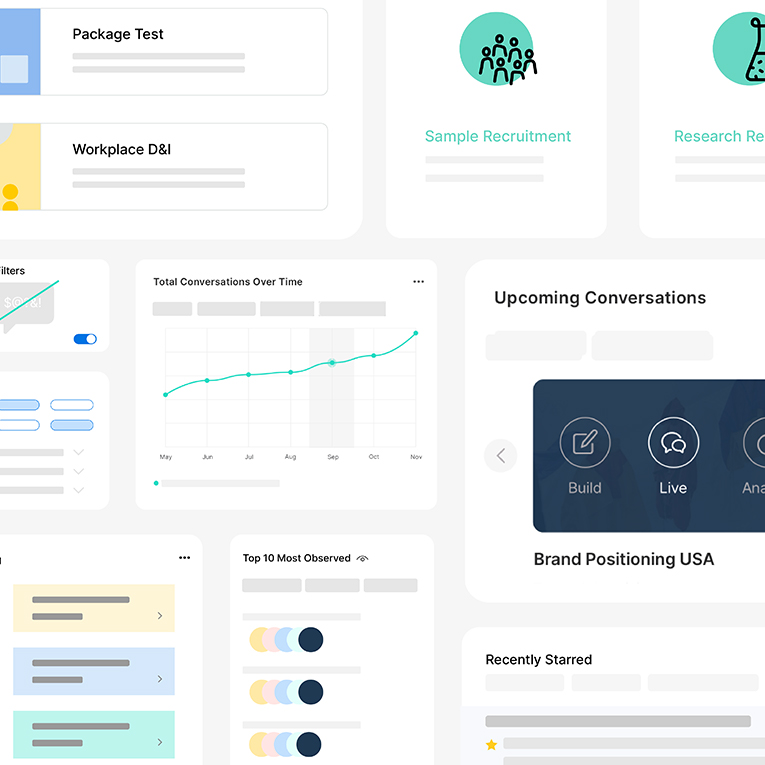.webp)
Trends
How to Calculate Your Sample Size Using a Sample Size Formula

.png)

.png)
Read More

.png)
.png)
.png)
Maria Noesi
November 25, 2021
Remesher
.webp)
Trends
How to Calculate Your Sample Size Using a Sample Size Formula

.png)

.png)
Read More

.png)
.png)
.png)
November 25, 2021
Remesher
.webp)
Trends
How to Calculate Your Sample Size Using a Sample Size Formula

.png)

.png)
Read More

.png)
.png)
.png)
November 25, 2021
Remesher
.webp)
Trends
How to Calculate Your Sample Size Using a Sample Size Formula

.png)

.png)
Read More

.png)
.png)
.png)
November 25, 2021
Remesher
.webp)
Trends
How to Calculate Your Sample Size Using a Sample Size Formula

.png)

.png)
Read More

.png)
.png)
.png)
November 25, 2021
Remesher
.webp)
Trends
How to Calculate Your Sample Size Using a Sample Size Formula

.png)

.png)
Read More

.png)
.png)
.png)
November 25, 2021
Remesher
75 Employee Stats on the Future of Work
There’s no doubt that COVID-19 has fundamentally disrupted the way we live and work – whether through furlough, unemployment, or transitioning to work from home.

There’s no doubt that COVID-19 has fundamentally disrupted the way we live and work – whether through furlough, unemployment, or transitioning to work from home. And while the ongoing socio-economic impacts of the novel coronavirus pandemic linger on, we can anticipate that our new way of working may be changed forever.
So, how can organizations prepare for a post covid workplace?
In this article, we gathered 75 employee statistics based on real Remesh session data from hundreds of employees around the country. By the end of the article, we hope we can help your organization understand what direction the future of work will take – and ultimately help you return to work with adequate resources and workforce you need to thrive after COVID-19.

Impact of COVID-19 on the Future of Work
- 68% of working Americans say they are now working from home
- 71% of Americans say local businesses have closed their doors indefinitely
- Nearly 37% of working Americans say their biggest worry was a “layoff” at the beginning of the pandemic
- 41% of working Americans worried about a “changing work culture” as a result of COVID-19
- Nearly 46% of working Americans in non-management positions worried about a reduction in cross-functional collaboration
- Almost 20% of employees say their top concern related to COVID-19 was reduced pay
- Only 5% of employees say they were concerned about the reduction of training, growth, and development opportunities during their shift to work from home
- About 15% of employees say they were worried about a decrease in work/life balance at the start of the pandemic
- 4% of employees agreed that a reduction of customer satisfaction was a significant concern related to COVID-19
- 61% of all employees say that coronavirus has not sped up their company’s digital transformation, while 36% of employees say it has
- 82% of market research professionals found that their clients are less focused and that their budgets are in flux at the start of the pandemic
- An overwhelming majority of market researchers (78%) say client sales were almost down to zero and that their research budgets have decreased at the beginning of the pandemic
- About 75% of market research professionals have entirely shifted their research online
- More than 70% of market researchers recognized a renewed demand for insight into consumers and businesses
Read: COVID-19 and The Future of Work (A Round-Up)

Organizational Response to COVID-19
- 71% of working Americans say their organization has strong leadership communication
- More than half of working Americans (65%) say their company has been implementing more “hygiene education” than ever
- 61% of working Americans recognized consistent organizational communication and emphasis on productivity at their workplace
- About 60% of working Americans say their companies need to stop business travel and provide sick pay
- A majority of suburban-based parents (78%) say their company is doing a great job at supporting their work from home experience
- 65% of employees say it means a lot that their managers are showing general support and routinely checking in
- Fewer than 60% of employees say their managers have routine meetings to make sure they’re doing okay
- An overwhelming majority of employees (72%) say they needed reassurance that they wouldn’t lose their jobs at the start of the outbreak
- A little more than half of workers (55%) say that their company should provide mental health resources to ease the impacts of the pandemic
- Close to 70% of working Americans ask that their companies keep them informed on all internal and external updates
- Less than half (41%) of working Americans say they do not have any discussion with their manager about COVID-19
- Nearly 60% of working Americans say that their managers emphasize constant communication
- 60% of urban-based parents say their company is doing an excellent job at supporting their work from home experience
- Nearly 70% of urban-based parents say their company needs to provide better flexibility
- More than 75% of suburban-based parents wish their companies could provide 24/7 daycare
- About 80% of suburban-based parents wish the constant video meetings would stop because they find it intrusive for their family
- 82% of men say their companies increased sick leave to have buffer room for childcare
- Over 80% of working men reported that everyone still comes to the office for work despite the ongoing pandemic
- More than 60% of working men say that their companies responded quickly to COVID-19 and that new rules and regulations were generally accepted
- 55% of working men say their company offers a PTO donation pool so coworkers don’t have to take unpaid time off
- A majority of parents (68%) say their company has remained the same as before COVID-19 in response to the needs of working parents
- About 60% of working parents find that their company is very responsive in providing care when needed
- 32% of working professionals found that their organization’s response to the pandemic was “very effective”
- 45% of working professionals say their organization’s response to the pandemic was “effective”
- 18% of working professionals say their organization's response to the pandemic was “neither effective nor ineffective”
- 4% of working professionals say their organization’s response to the pandemic was “ineffective”
- A majority (81%) of workers say their companies need to keep their employees paid even if they can’t work due to COVID-19
- 79% of workers say that reassurance about their jobs and incomes is the single most crucial thing organizations should do to help their employees
- Close to 70% of working Americans say that open and honest communication from their organization is very essential
- A little less than half of employees (40%) say their company uses data analytics to support its digital business transformation
- Almost half of employees (47%) say their organization use social media platforms to support their digital business transformation
- More than half of employees (60%) say their organization has increase use of mobile technologies and accessibility as part of its digital business transformation
- 55% of Gen X employees say that their organization’s transparency and communication has not changed since COVID-19, while 35% say it has increased and 10% say it has become worse
- 39% of Millennial employees say that their organization’s transparency and communication has not changed, while 51% say it has increased and 10% say it has become worse
- 12% of Boomer employees say that their organization’s transparency and communication has not changed, while 75% say it has increased and 12% say it has become worse
- About 28% of working Americans say that their organization operates in an agile way to stay competitive in the increasingly digital world
- 41% of employees say that their organization delivers a unique and personalized customer experience to remain competitive in an increasingly digital world
Read: 3 Key Case Studies for Successful Digital Transformation

Impact of Virtual Learning on Work-life balance
- More than 60% of working parents find it harder to juggle responsibilities due to virtual learning
- A majority of parents (64%) found themselves getting less work done as a result of helping their kids with schoolwork
- Nearly 64% of parents say they work later at night since they help kids with their school work during the day
- 64% of parents say there are few to no interruptions with work
- More than half of parents (58%) find themselves playing the role of teachers to help their students with coursework
- More than half of parents (56%) say they no longer have young children to care for anymore and don’t need to divide their time between work and childcare
- Nearly 55% of parents say they have high school-aged children and don’t need to help them with schoolwork
- More than half (56%) of working parents find themselves working longer hours and are getting less sleep
- About 57% of working parents say their time spent between working and childcare is the same as before COVID-19
- Nearly 56% of parents are focusing more on their children and their education than work responsibilities
- 61% of parents find the balance between work and helping their children to be chaotic
- About 61% of parents say that they are more exhausted and stressed from working and helping their children
- Nearly 65% of parents find it challenging to focus on work due to virtual learning
- Only 12% of parents say their kids’ learning environments are in-person
- About 24% of parents say their kids’ learning environments are completely virtual
- Fewer than 30% of parents say their kids’ learning environments are a combination of both in-person and virtual
- About 60% of families agree that household/childcare responsibilities are evenly split
- A large majority of men (80%) say household/childcare have a 50/50 split
- Only half of women (54%) find that the household/childcare responsibilities are evenly split between the two genders
- 80% of men say that the splitting of work responsibilities depends on the day
- A majority of women (54%) find themselves doing all of the housework while their husband goes to work every day
- 53% of single parents say they take on all the parenting responsibilities without additional help, including work, household chores, and childcare
- 53% of parents say that the husband does the most childcare responsibilities since he is working from home
- Half of American families (50%) are managing their parenting life similarly to how they manage their work-life
Read: Employee Concerns About COVID-19 (Report)

Continuing Your Research
While COVID-19 has become almost synonymous with remote work for many, there is a silver lining to be found– an increase in organizational flexibility, renewed workplace collaboration, and the mastering of new technologies such as artificial intelligence, to name a few.
To access more insights on the future of work, check out our Remesh Live! conversation on Parenting and the Future, where we asked over 100 working parents about the most challenging difficulties facing families and their influence on the office.
Get your FREE copy of the recording and findings report today!
Eager to better understand your customers? Check out our eBook on writing a discussion guide for deeper, more meaningful insights.
Stay up-to date.
Stay ahead of the curve. Get it all. Or get what suits you. Our 101 material is great if you’re used to working with an agency. Are you a seasoned pro? Sign up to receive just our advanced materials.






